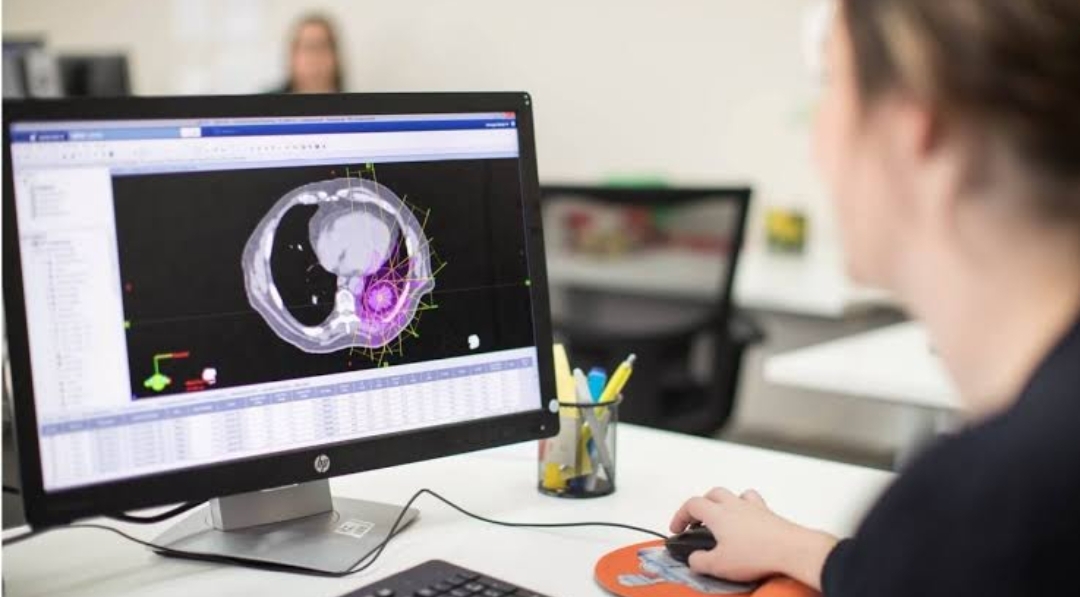
Are you intrigued by the latest advancements reshaping cancer care? Imagine a realm where innovation and precision converge to revolutionize treatment strategies. Welcome to the world of radiation therapy software, a cutting-edge tool redefining the way we approach oncology. In this article, we explore the intricacies of radiation therapy software, its pivotal role in cancer care, and the profound impact it’s making on patient outcomes. So, let’s delve into this captivating domain.
Understanding Radiation Therapy Software: An In-Depth Exploration
Let’s begin by unraveling the essence of radiation therapy software. In simple terms, it’s a specialized tool crafted to aid healthcare professionals in planning and executing radiation treatment for cancer patients. This software encompasses a broad spectrum of functionalities, ranging from simulating treatment scenarios to fine-tuning dosage levels for optimal effectiveness and minimal side effects. By harnessing advanced algorithms and computer modeling, radiation therapy software empowers clinicians to craft tailored treatment plans with unparalleled precision.
The Evolution of Radiation Therapy Software: From Concept to Advancement
The journey of radiation therapy software dates back to the nascent days of medical computing. Initially, treatment planning relied on manual computations and basic tools, posing significant challenges in accuracy and efficiency. However, as technology progressed by leaps and bounds, a seismic shift occurred. The advent of sophisticated algorithms and computational techniques paved the way for more refined software solutions capable of delivering personalized treatment strategies customized to each patient’s unique needs.
Key Components of Radiation Therapy Software: Unlocking Its Potential
Radiation therapy software comprises several vital components, each playing a pivotal role in the treatment continuum. Let’s delve into some of these key elements:
- Imaging Integration: At the core of radiation therapy software lies its seamless integration with various imaging modalities, such as CT scans, MRIs, and PET scans. This integration enables clinicians to precisely delineate tumor boundaries and surrounding healthy tissues, facilitating precise treatment planning.
- Dose Calculation Algorithms: The backbone of radiation therapy software is its sophisticated dose calculation algorithms, which ascertain the optimal radiation dosage to target cancer cells while minimizing harm to adjacent healthy tissues. These algorithms consider factors like tumor size, location, and biological characteristics, ensuring precise radiation delivery.
- Treatment Planning Tools: Radiation therapy software offers a suite of intuitive treatment planning tools, empowering clinicians to craft bespoke treatment plans tailored to each patient’s specific condition. These tools facilitate meticulous optimization of beam angles, dose distribution, and treatment duration, optimizing therapeutic outcomes while mitigating side effects.
- Quality Assurance Mechanisms: Ensuring the safety and efficacy of radiation therapy necessitates robust quality assurance mechanisms integrated into the software. These mechanisms encompass comprehensive checks and validations to ensure the accuracy of treatment plans and dosage calculations, guarding against potential errors or discrepancies.
Benefits of Radiation Therapy Software: Elevating Patient Care
The adoption of radiation therapy software heralds a plethora of benefits that significantly elevate the quality of patient care. Let’s delve into some of these advantages:
- Precision and Accuracy: By leveraging advanced imaging technologies and computational algorithms, radiation therapy software enables precise targeting of cancerous tissues while preserving surrounding healthy organs. This precision minimizes collateral damage and lowers the risk of treatment-related side effects, enhancing patient safety and comfort.
- Personalized Treatment Strategies: Recognizing the unique attributes of each cancer patient, radiation therapy software allows clinicians to tailor treatment plans to individual anatomical and physiological characteristics. This personalized approach ensures optimal therapeutic outcomes while accounting for variables like tumor size, location, and biological behavior.
- Efficiency and Workflow Optimization: In modern oncology, streamlining the treatment planning process is imperative, where timely intervention can make a substantial difference in patient outcomes. Radiation therapy software expedites this process by automating routine tasks like image segmentation and dose optimization, thereby enhancing workflow efficiency and maximizing clinical productivity.
- Adaptive Radiation Therapy: Cancer is a dynamic disease that evolves over time, necessitating adaptive treatment strategies to effectively counter its progression. Radiation therapy software facilitates adaptive radiation therapy by enabling real-time monitoring of tumor response and anatomical changes, allowing clinicians to adapt treatment plans accordingly and ensure sustained therapeutic efficacy.
Challenges and Limitations: Addressing the Hurdles
Despite its promise, radiation therapy software encounters several challenges and limitations. Let’s explore some of the key hurdles faced by clinicians and researchers:
- Cost and Accessibility: The implementation of radiation therapy software often involves a substantial financial investment, encompassing software licensing fees, infrastructure upgrades, and staff training. This cost barrier can pose challenges, particularly for healthcare facilities with limited resources, hindering widespread accessibility and adoption of the technology.
- Technical Complexity: Radiation therapy software is inherently complex, demanding specialized training and expertise to navigate its functionalities effectively. Clinicians and medical physicists must undergo rigorous training to unlock the full potential of this technology, which presents a steep learning curve for novice users and contributes to implementation challenges.
- Data Integration and Interoperability: Seamless integration of radiation therapy software with existing healthcare IT systems is critical for ensuring interoperability and data exchange across different platforms. However, interoperability issues and data silos remain significant barriers, impeding efficient collaboration and information sharing among healthcare providers.
Future Directions: Charting the Course Ahead
Despite these challenges, the future of radiation therapy software appears promising, with ongoing advancements poised to further revolutionize cancer treatment. Here are some exciting developments and future directions to anticipate:
- Artificial Intelligence and Machine Learning: The integration of artificial intelligence (AI) and machine learning algorithms holds vast potential for augmenting the capabilities of radiation therapy software. These AI-driven tools can analyze extensive patient data, identify patterns, and generate predictive models to optimize treatment planning and decision-making.
- Multimodal Imaging and Functional Imaging: The fusion of multimodal imaging techniques, such as positron emission tomography (PET) and magnetic resonance imaging (MRI), with radiation therapy software promises unparalleled insights into tumor biology and treatment response. By incorporating functional imaging parameters into treatment planning, clinicians can refine therapeutic strategies and enhance treatment outcomes.
- Patient-Centered Care: Empowering patients to play an active role in their treatment journey is pivotal in modern healthcare. Radiation therapy software is evolving to incorporate patient-centric features, such as virtual reality simulation and personalized treatment visualization, enabling patients to comprehend their treatment options better and make informed decisions about their care.
Conclusion
Radiation therapy software stands as a beacon of innovation in cancer treatment, offering a robust toolkit to combat this formidable disease. From precision and personalized treatment strategies to streamlined workflow efficiency and adaptive therapy approaches, the potential impact of this technology on patient outcomes is profound. As we navigate the dynamic landscape of oncology, let us embrace the transformative potential of radiation therapy software in shaping the future of cancer care.
Are you ready to explore the possibilities? Let’s harness the power of technology to drive positive change and revolutionize cancer treatment for generations to come.

